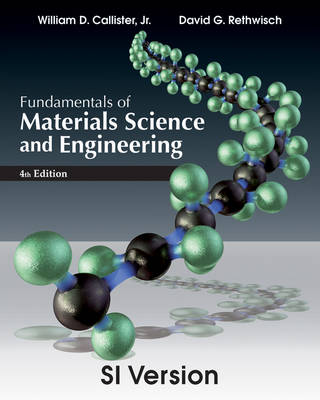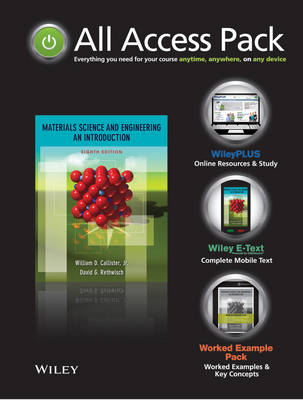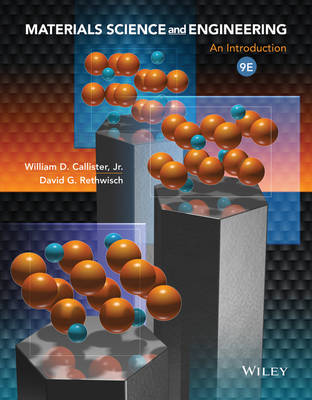Wiley Plus Products
22 total works
Materials Science and Engineering 8th Edition for Penn State with Wileyplus Set
by William D Callister
Material Science 8th Edition Sel Ch Purdue with Wileyplus 4 Set
by William D Callister
Materials and Mechanics for James Madison Univ with Wileyplus Set
by William D Callister
Materials Science & Engineering B&w with Wileyplus Set
by William D Callister and David G Rethwisch
Fundamentals of Materials Science and Engineering
by William D Callister and David G Rethwisch
Fundamentals of Materials Science and Engineering, 4th Edition continues to take the integrated approach to the organization of topics. That is, one specific structure, characteristic, or property type at a time is discussed for all three basic material types metals, ceramics, and polymeric materials. This order of presentation allows for the early introduction of non-metals and supports the engineer's role in choosing materials based upon their characteristics. Also discussed are new, cutting-edge materials. Using clear, concise terminology that is familiar to students,
Fundamentals presents material at an appropriate level for both student comprehension and instructors who may not have a materials background.
Materials Science and Engineering
by William D Callister, Jr. and David G Rethwisch
Fundamentals of Materials Science and Engineer B&w Set with Wileyplus Set
by William D Callister
All Access Pack for Materials Science and Engineering
by William D Callister and David G Rethwisch
Materials Science and Engineering: An Introduction, 9e and WileyPLUS Registration Card
by William D Callister and David G Rethwisch
Fundamentals of Materials Science and Engineering an Integrated Approach 4E WileyPlus Standalone Card
by William D Callister
Materials Science and Engineering an Introduction 8E WileyPlus Blackboard Card
by William D Callister
Materials Science and Engineering 8th Edition Isv with Wileyplus Set
by William D Callister
WileyPLUS WebCT Stand-alone to Accompany Fundamentals of Materials Science
by William D Callister
(wcs)Fundamentals of Materials Science and Engineering
by William D Callister
WileyPLUS Stand-alone to accompany Materials Science and Engineering
by William D Callister and David G Rethwisch



